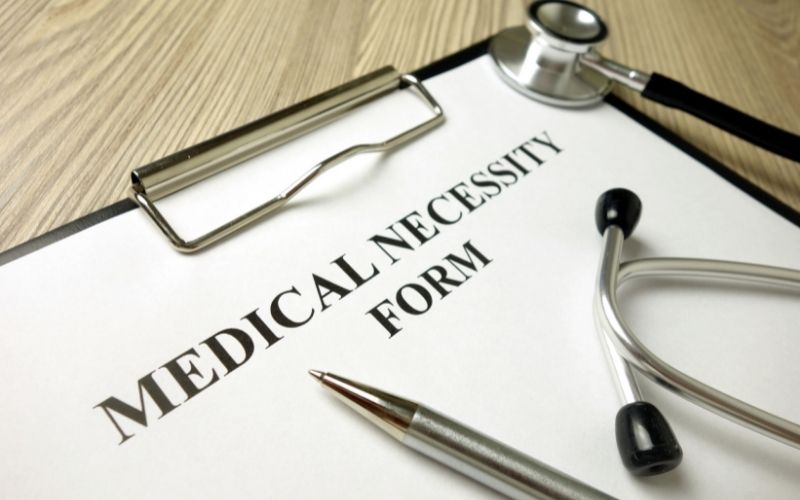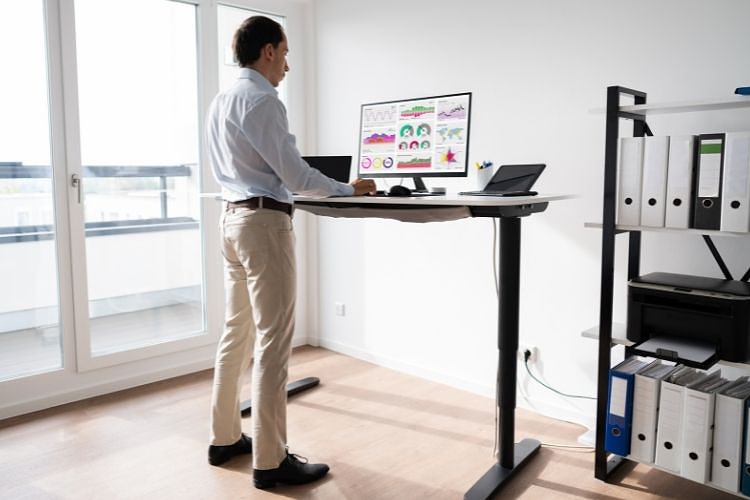Standing desks have a lot of benefits, but they can also be quite expensive. And while the popularity of standing desks suggests anyone should be able to afford them, that’s not necessarily the case.
Sometimes, people need a standing desk to help reduce physical pain. When someone’s need for a standing desk surpasses wanting to be more productive, they should be able to write it off as a medical expense.
Using an HSA or FSA might be a viable option.
Here’s what you need to know about both types of accounts and how to go about using them to pay for a standing desk.
Table of Contents
What is HSA?

An HSA is a health savings account. It’s similar to a traditional savings account, except the money is exclusively for healthcare related expenses.
Some people like having an HSA because the money in it belongs entirely to them, their employer or insurance provider do not have control over the money.
Any money put into an HSA is not taxed, so you can liberally put as much as you want into it without having to claim it later.
Not everyone can open an HSA, though.
You must have a high-deductible plan to be eligible for this type of savings account.
What is FSA?

An FSA is a flexible spending account.
The money is typically deducted from your pay before you receive it, and because it’s tax-free, it can increase your take-home pay annually by reducing your taxable income.
You can use FSA funds for eligible expenses like “deductible and coinsurance amounts, vision and dental care, medications and hearing aids.”
This type of account can also be used for dependents under the age of 13 or spouses and dependents living with you who are unable to care for themselves independently.
Are Standing Desks HSA and FSA Eligible?
This isn’t a yes or no question. Standing desks are not listed as one of the eligible expenses, like dental care or hearing aids are.
They simply haven’t been recognized as medical products that can reduce the pain and increase the physical and mental wellbeing of a patient.
However, you can still make a standing desk eligible with one of these accounts.
You will need to purchase it out-of-pocket initially, then make a claim with the necessary documents to prove that the desk is a medical expense.
This can be a little tedious, so don’t expect this process to be over and done within a day or two. You will need to fill out a few forms and talk to a few doctors.
Essentially, you are building a case for why you need that standing desk, so it needs to be solid and detailed.
How Do I Use My HSA/FSA to Purchase a Standing Desk?
The very first thing you need to do is talk to your doctor.

Explain how you’re feeling and how it’s impacting your work. You may be prone to bouts of sciatica or have trouble maintaining a healthy weight, partly because you spend most of your day sitting at a desk in front of a monitor.
If your doctor agrees that a standing desk would greatly improve your health, ask them to write you a Letter of Medical Necessity (LMN). It should clearly state why you need the desk.
A doctor should know how to write an LMN, but it’s helpful to provide them with a written list of your ailments and how you believe the desk will help.
Want to go an extra step further?
Talk to a physical therapist and see if you can request them to also write you an LMN. Remember, you are building a case, so providing as many letters as possible from different sources will strengthen your argument.
A good Letter of Medical Necessity should include:
- Your information
- Your physician’s information
- The diagnosis
- The suggested treatment
- Notable medical history
- How said treatment is medically necessary
- A summary
- Your physician’s signature
- Any supporting literature, if relevant

Now that you’ve got at least one LMN, you can purchase your standing desk.
Hopefully, you’ve done plenty of research and know exactly which one you’re going to go for. If not, we recommend getting a standing desk that moves up and down electronically.
This is a lot easier to maneuver compared to a simple standing desk with a lever to adjust the desk. A standing desk should be as tall as your elbows, so ensure this desk can be adjusted to the appropriate height.
A standing desk that is too tall or short can cause additional pain.
You cannot use an FSA or HSA card to buy the desk.
You will need to purchase it with your normal debit or credit card first. Make sure you ask for a receipt!
This is incredibly important. You cannot continue with the claim process without a clearly labeled receipt for the desk.
By now you should have your desk, receipt, and LMN in hand.
It’s time to make the claim! Check if you need an Explanation of Benefits (EOB) from your insurance company. This will detail why they could not cover the product and will help support your argument that you need to pay for the desk with your HSA or FSA.

How you file your claim depends on your FSA or HSA provider.
You may need to mail in a filled-in claim form or go onto their website and fill it out there. Make sure to attach all the relevant documents for claim (the EOB, LMN, and receipt).
It should take about two weeks for you to receive your reimbursement.
Congratulations! You just bought a standing desk and used your HSA or FSA to do it!
Which One is Better to Use to Buy a Standing Desk: HSA or FSA?
This all depends on your insurance plan and what your deductible is.
If you have a relatively low deductible, then an FSA is the best choice. You can only have an HSA if you have a high deductible insurance plan.
When to Not Use HSA or FSA
There are times when buying a standing desk with either account isn’t a good idea.
To start, a medical-related purchase will go on your record as a medical condition. Unfortunately, the American healthcare system does not take kindly to pre-existing conditions, so you may want to consider if having the desk covered is worth the note on your record.
The record could make it harder to get the same insurance plan in the future or change insurance providers without huge added fees. Some individuals prefer to pay for the standing desk with their own money and take advantage of their insurance in other ways.
You may also be told that you’re not medically required to use a standing desk.
This can be frustrating, and we sympathize with you. In these cases, it’s best to take a deep breath and review your options.
You can also submit your claim again with more LMN, or give a representative a call and ask for advice.
Finally, if you’re planning to spend your FSA or HSA money on a standing desk and don’t have enough for other medical expenses for the year, you should probably hold off on making the purchase.
Alternative Options to a Standing Desk
If you can’t get a standing desk covered by your HSA or FSA, we’ve listed a few alternatives to help provide ergonomic support.
- Laptop Stand

If you can elevate your laptop, you should be able to work while standing up.
This won’t be as comfortable as using a full-on standing desk, but it will get you out of your chair and let you stretch your legs during the work day.
2. Mounted Shelf/Desk

Are you handy with a few tools?
Try mounting a wide shelf to a wall as a makeshift desk. This will save you a lot of money and serve the same purpose as a standing desk.
Remember what we said about height: the desk should be as tall as your elbows are when bent 90 degrees.
3.Use a Pre-existing Shelf

This is the simplest alternative, and it’s completely free.
Find a shelf that’s the same height as your elbows and set it up as a make-shift standing desk. It may not look as beautiful as a ‘normal’ desk, but it will help relieve lower back pain just as well.
To Wrap Things Up
Using an HSA or FSA account for a standing desk is entirely possible, it’s just not as simple as using the account to buy medication.
You will need to be organized and patient when collecting the documents required to make a claim. Having clear and credible Letters of Medical Necessity is particularly important, so don’t take shortcuts when it comes to getting those letters.
At the end of the day, though, surgeries and medication should be prioritized over getting a standing desk, so make sure you have sufficient funds before making any claims.
Have you had any success getting a standing desk with HSA or FSA? We’d love to know all about your experience in the comments below!
Good luck!

My name is Vance, and I am the owner of To Ergonomics. Our mission is to improve your workflow by helping you create a supportive and welcoming environment. We hope that you’ll find what you’re looking for while you’re here.

